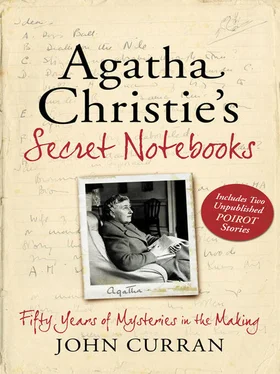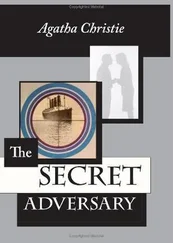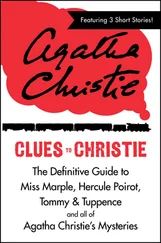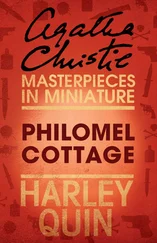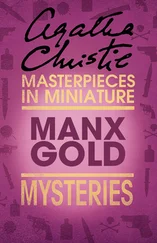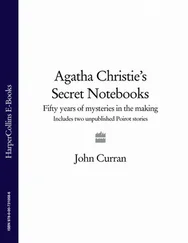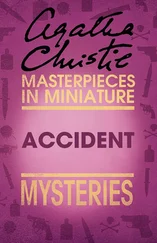Patient wheeled in—nurse by her (Bond) or interne
Questions spelled out Murder
Mirror
Bathroom
Saw someone Yes
Someone you knew Yes
Is that person in the room now Yes
Spell out the name A—B
B- Yes
Collapse reported by nurse? interne?—
Take off the mask—I know well enough who you are Curtain falls—My God—you!
Alternative end—gloves—coated in phosphorescent paint—hold up your hands—Lights out—Guilty Hands!
Even at this late stage in her theatrical career Christie was experimenting, as the last two notes above show. Incredibly, she wanted the curtain to fall, or the lights to black out, before the murderer was unmasked. This, if it had been allowed to continue, would have been the ultimate Christie twist—though the shock was to be somewhat mitigated by a recording of her own voice asking the audience whom they thought the killer was.
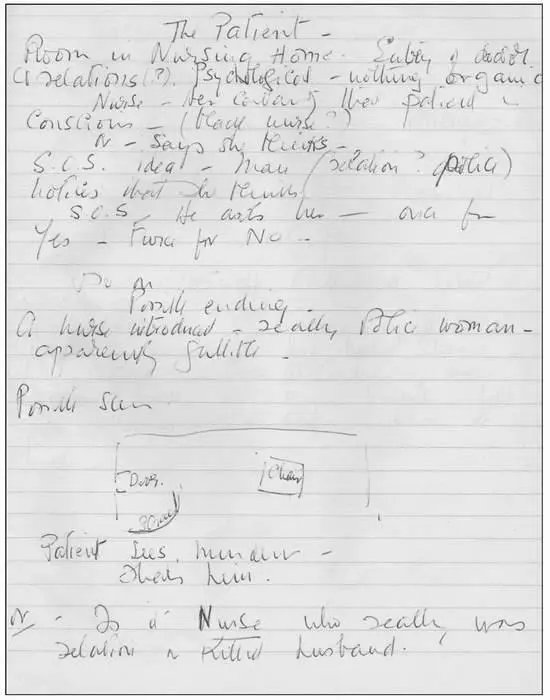
A sketch and notes for The Patient from Notebook 64. Note the reference to ‘S. O.S.’ the short story from The Hound of Death that, like The Patient, also features an unusual method of communication.
Not surprisingly, however, the idea was not a winner. It was abandoned after a flurry of telegrams to the author, who was abroad during the pre-London tryout in Aberdeen. With a track record of glittering theatrical success behind her, it does seem a very odd concept to have introduced; it would be like reading one of her novels and finding the last chapter missing.
Fiddlers Three 3 August 1972
It is very important that businessman Jonathan Panhacker should live until Wednesday 18th as he has made a financial arrangement with his son, Henry, to inherit £100,000 on that date. When he unexpectedly dies, the Fiddlers Three conspire to make sure he is still ‘alive’ for a few more days.
This is the last play written by Agatha Christie and the only one not to receive a West End run. After a glorious and record-breaking playwriting career, this last work was a sad curtain call. Her previous dramatic offering, Rule of Three (see above), was not particularly well received and it was ten years before she again felt tempted to try a script. Fiddlers Three is a two-act comedy thriller but, unfortunately, it has not enough of either to be a successful blend and falls between two uneasy extremes. It has a complicated history. In its first incarnation, Fiddlers Five, it premiered on 7 June 1971; the following year on 3 August a revamped version was presented as Fiddlers Three. In the intervening year Christie amalgamated some characters to reduce the number of Fiddlers.
The set-up is relatively straightforward. If Jonathan Panhacker lives until Wednesday 18th his financial arrangement with his son, Henry, to inherit £100,000 on that date will come to pass. In his turn, Henry has promised to invest the money in a business scheme with Sam Fletcher and Sam Bogosian. When Jonathan suddenly drops dead, Henry, Sam and his secretary, Sally, the Fiddlers Three of the title, scheme to keep him ‘alive’ until the 18th. This involves a double impersonation, a dubious death certificate and a revelation about an earlier murder. Complications arise in the second act when various people who knew Jonathan arrive at their hideaway hotel demanding to see him.
Like many of Christie’s later, and weaker, titles it contains good ideas but her earlier genius for exploiting them has deserted her; if she had written this play 20 years before she would have developed the plot in a more convincing manner. There is an unlikely impersonation and some unconvincing business with pill bottles before the play culminates in the unmasking of an improbable murderer. It cannot be coincidence that many of her later plays— Spider’s Web, The Unexpected Guest, Verdict, The Rats and Fiddlers Three —feature this type of a will-they-get-away-with-it situation even if she frequently manages to reveal a murderer also.
Unsurprisingly, her producer Peter Saunders was not anxious to present it in the West End, correctly presuming that it would receive a critical mauling. As it was, the local press was hardly kinder and phrases such as ‘entertaining, amusing but undemanding play’, ‘lightest vein—bordering on farce’ and ‘the plot is predictable, witless and shallow’ peppered what reviews there were.
As early as October 1958, the first seeds were sown in Notebook 15, although it would be over a dozen years before she began to cultivate it seriously. Obviously, even this late in her career, she was revisiting her faithful Notebooks to find exploitable ideas:
Oct. 1958
Projects
A Play—light-hearted (a Spider’s Web type) Where?—girl’s school?
Or Cheating Death parties? Pretending a death? or smuggling away a natural death—devoted fluffy secretary?—a silly type deliberately chosen? Boardroom—K. doubles as wife and corpse—wig etc.—Grand muddle—
The ‘girl’s school’ idea surfaced as Cat among the Pigeons, published the following year. And the ‘Cheating Death parties’ was briefly pursued in Notebook 39 below. ‘Smuggling away a natural death’ was the one that provided the basis of Fiddlers Three.
Notebook 4 contains most of the plotting, but, as with the later book titles, the notes themselves are vague and unfocussed although the list of characters is accurate. A minor mystery about this play is the naming of the two main characters; Panhacker and Bogosian are two of the most unusual names in the entire Christie output.
Scene—an office
Mr Willis Stanley a bit off- story
His friend Mr. Bogosian
Nellie (M) devoted rather talkative and scatty
The Penthouse owner—Very rich man lives in W. Indies
His son or nephew? Make over all his English assets
Going to finance—only a fortnight to go
Then goes up after lunch—or is lift out of order—so he comes in here—sits in other room—found dead
M. says it will be her husband or brother—Go out to buy me
an onion [to induce tears]
Jeremy Brooker Brown
That’s all right—he’s got to be alive—Geraldine—Go on upstairs with things
Gina
Sally Lee
Sam Fletcher
Jan Bogosian
Henry Panhacker
Solomon Panhacker
An Air Hostess
Detective Inspector Wylie
Mr. Moss
Various titles were considered and This Mortal Coil appears on an early script:
This Mortal Coil
Operation Deadline
Sixpence Off
Deadline
Fiddle de Death
In Notebook 39, under the mysterious heading ‘M and J Play’, we find two attempts at a ‘death duties’ play. The first sketch has echoes of ‘Jane in Search of a Job’, originally published in August 1924 and collected ten years later in The Listerdale Mystery:
Death duties—girl is dead—great fortune is coming to her—idea is she has to appear alive for one more week. Man advertises for young lady—5ft 7in, fair—hair slight build, blue eyes etc. First scene interesting girls whittled down—one is chosen to impersonate girl—J
The second is nearer to the eventual plot, but this was not developed until Notebook 4 where it becomes recognisably Fiddlers Three:
Death Duties—a natural death body has to be hidden for a week—impersonation by M or J—undertaker helps. Office—M and her two employers
Mr Leonard—big, bouncy, common
Mr Arkwright—melancholy—dreary
They are in a jam—what to do
Sally!
Akhnaton Published 14 May 1973
Spanning a period of 16 years, the play concerns the attempts of the young King Akhnaton to introduce a new religion to Egypt. His failure spells tragedy for himself, his queen and, ultimately, Egypt.
Читать дальше
Конец ознакомительного отрывка
Купить книгу
